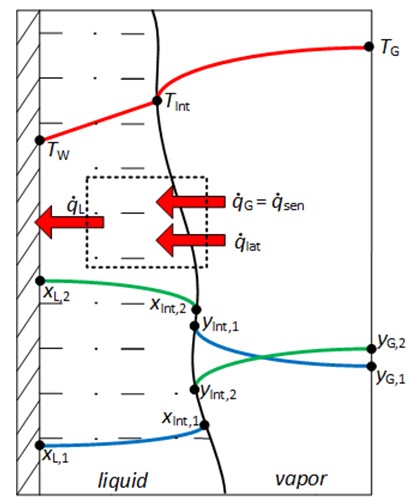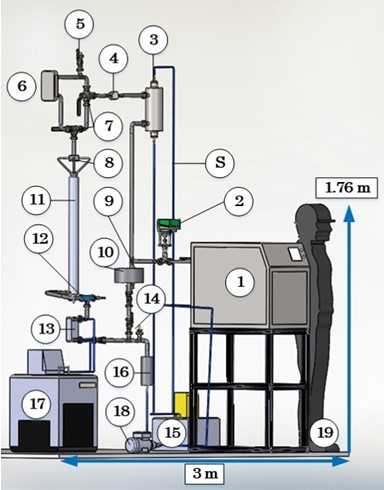Increasingly, mixtures are being considered as replacements for the conventional pure working fluids for use in refrigeration systems, heat pumps or ORC processes, as the use of pure substances is restricted due to climate protection regulations. Zeotropic mixtures, however, unlike pure fluids in vapor-liquid phase equilibrium, always have different vapor and liquid phase compositions. In the heat-transferring apparatuses condenser and evaporator, which are also part of the thermodynamic cycle processes mentioned above, this zeotropic behavior leads to a superposition of heat and mass transfer during the phase change. This makes the description of the condensation process considerably more complex and the prediction of the heat transfer more complex. The figure on the left shows schematically the temperature and concentration profiles on which the modeling of the vertical film condensation of a binary mixture with a so-called non-equilibrium approach is based. The precise modeling of the condensation is based on the knowledge of the manifold dependencies between mass and heat transport correlations, as well as thermodynamic state and transport variables in the calculation.
In addition to the modeling and systematic analysis of the predictive models, a test rig (see figure on the right) is being set up in which heat and mass transfers of mixture condensation can be studied independently for a wide range of compositions of different mixtures. Thus, experimental data can be provided in the future and the previous prediction models can be made more precise.


 ©
IfT, Leibniz Universität Hannover
©
IfT, Leibniz Universität Hannover


 ©
IfT, Leibniz Universität Hannover
©
IfT, Leibniz Universität Hannover


